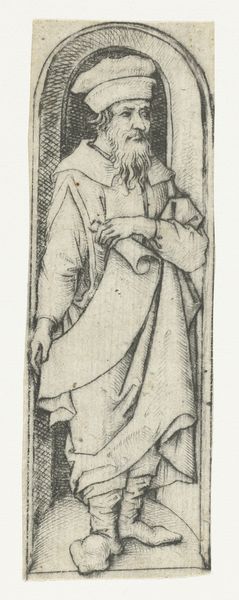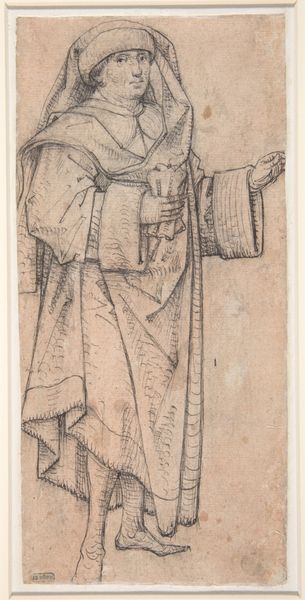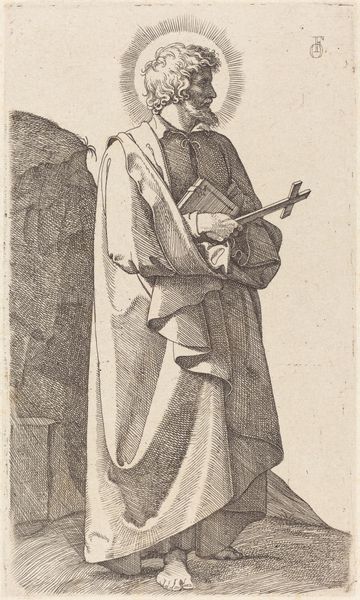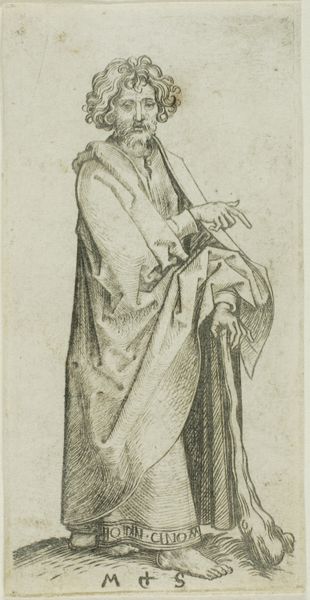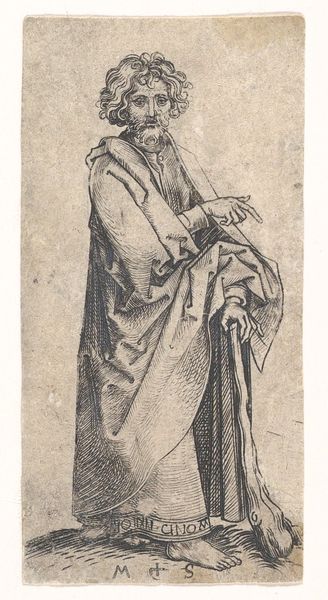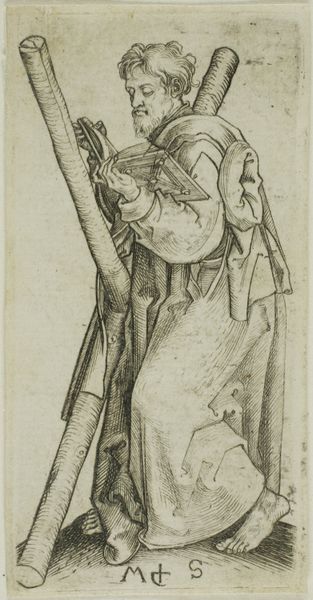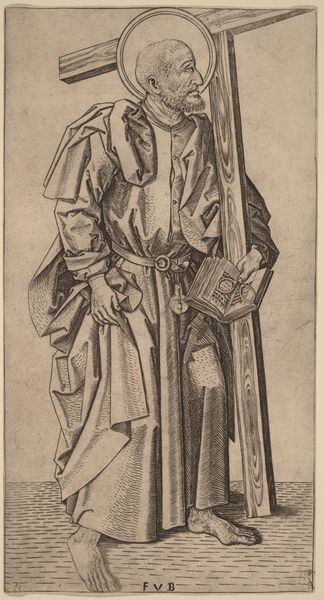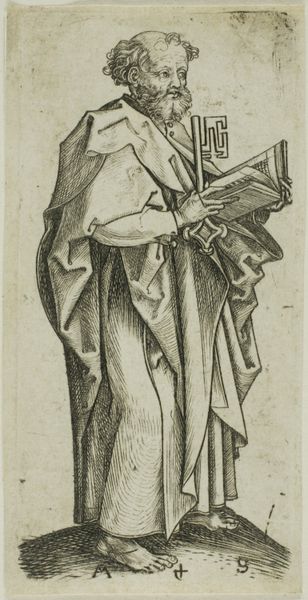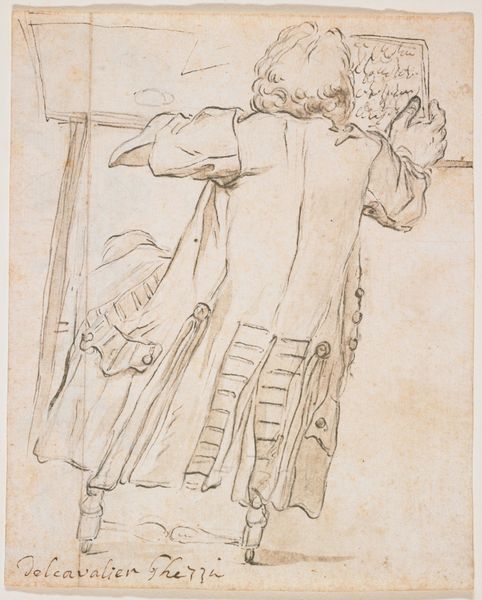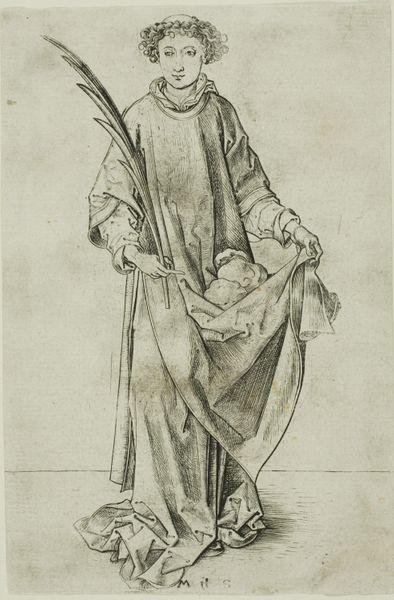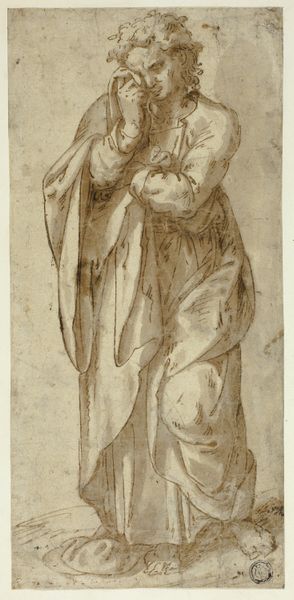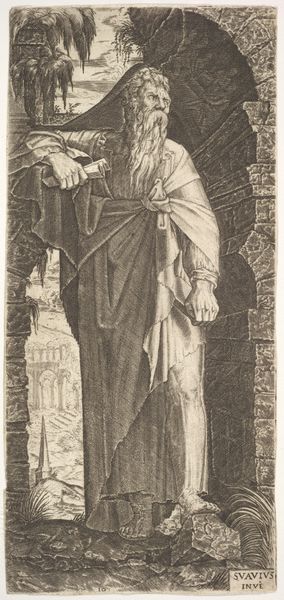
Dimensions: 88 mm (height) x 43 mm (width) (bladmaal)
Curator: This is Martin Schongauer’s "Apostlen Paulus," created sometime between 1430 and 1491. It's currently housed here at the SMK, Statens Museum for Kunst. Editor: The engraving has an arresting stillness about it. The use of line work creates this sense of solemnity, especially in the apostle's garments. Curator: The engraving reflects the burgeoning printing culture of the late 15th century. Prints made art more accessible to a wider audience, shaping religious and political discourses beyond the confines of the Church or wealthy patrons. Editor: I’m struck by how Schongauer balances the linearity of the medium with attempts at textural differentiation—note how the hatching varies to define form and create subtle shadows in areas like the face. The bare feet seem so out of character to the solemn face and rich drapery. Curator: That blend speaks to a particular moment. Schongauer, working in the Northern Renaissance tradition, marries close observation of detail with the prevailing symbolic language of religious art. Paulus, or Paul, is depicted with a sword and a book – symbols of martyrdom and his Epistles. Editor: It’s that book, positioned so centrally, that anchors my attention. The precision of the lines suggesting its form, juxtaposed with the looser handling of the robes, feels like a conscious effort to highlight its importance. Curator: Absolutely. Books, increasingly widespread due to printing, gained immense cultural authority. In terms of the museum context, placing "Apostlen Paulus" alongside illuminated manuscripts of the period provides insight into shifting technologies of image-making and the status afforded to texts. Editor: For me, focusing on those lines, I can trace a history of artistic decisions and constraints that echo through later engravings and prints, even into modern printmaking. There’s something powerful in the limitations that drive this creative line-based construction. Curator: Yes, it offers a peek into how artists of the time navigated these challenges and responded to the changing social and cultural landscapes. Editor: A testament to art’s enduring ability to transform constraints into a potent, expressive language.
Comments
No comments
Be the first to comment and join the conversation on the ultimate creative platform.
